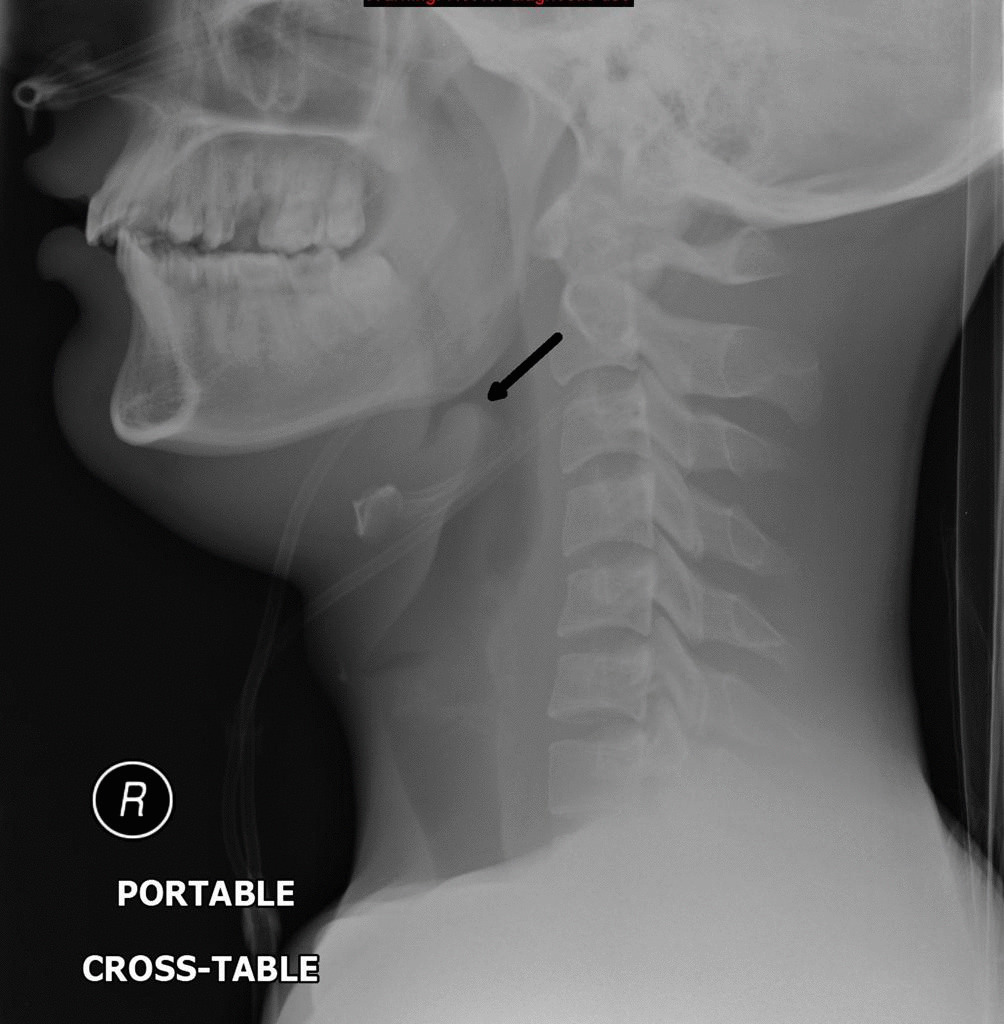Epiglottitis x rays
|
Epiglottitis Microchapters |
|
Diagnosis |
|---|
|
Treatment |
|
Case Studies |
|
Epiglottitis x rays On the Web |
|
American Roentgen Ray Society Images of Epiglottitis x rays |
Editor-In-Chief: C. Michael Gibson, M.S., M.D. [1] Associate Editor(s)-in-Chief: Prince Tano Djan, BSc, MBChB [2]
Overview
On lateral soft tissue X-ray of the neck, the thumbprint sign a finding that suggests the diagnosis of epiglottitis is seen.[1][2][3] The thumbprint sign is a manifestation of swollen and edematous epiglottis. This shows as a hemispherical mass at the base of the tongue replacing the normal slender coma shape of the epiglottis.[4]
X Rays
Lateral soft tissue X Ray of the neck
On lateral soft tissue X-ray of the neck, the thumbprint sign is finding that suggests the diagnosis of epiglottitis is seen.[1][2][3] The thumbprint sign is a manifestation of swollen and edematous epiglottis. This shows as a hemispherical mass at the base of the tongue replacing the normal slender coma shape of the epiglottis as shown in the image below:[4]
Single upright lateral radiograph reveals a markedly thickened epiglottis,
the classic "thumb" appearance (arrow).
Note is also made of oxygen tubing around the patient's ears and nose.
Image courtesy of Dr Andrew Ho, [5]
References
- ↑ 1.0 1.1 Grover C (2011). "Images in clinical medicine. "Thumb sign" of epiglottitis". N Engl J Med. 365 (5): 447. doi:10.1056/NEJMicm1009990. PMID 21812674.
- ↑ 2.0 2.1 Raj PP, Larard DG, Diba YT (1969). "Acute epiglottitis in children. A respiratory emergency". Br J Anaesth. 41 (7): 619–27. PMID 5798842.
- ↑ 3.0 3.1 Stuart MJ, Hodgetts TJ (1994). "Adult epiglottitis: prompt diagnosis saves lives". BMJ. 308 (6924): 329–30. PMC 2539273. PMID 8124122.
- ↑ 4.0 4.1 Achong MR (1979). "Respiratory tract infections in adults". Can Fam Physician. 25: 1189–93. PMC 2383214. PMID 21297792.
- ↑ <a href="https://radiopaedia.org/">Radiopaedia.org</a>. From the case <a href="https://radiopaedia.org/cases/22906">rID: 22906</a>
